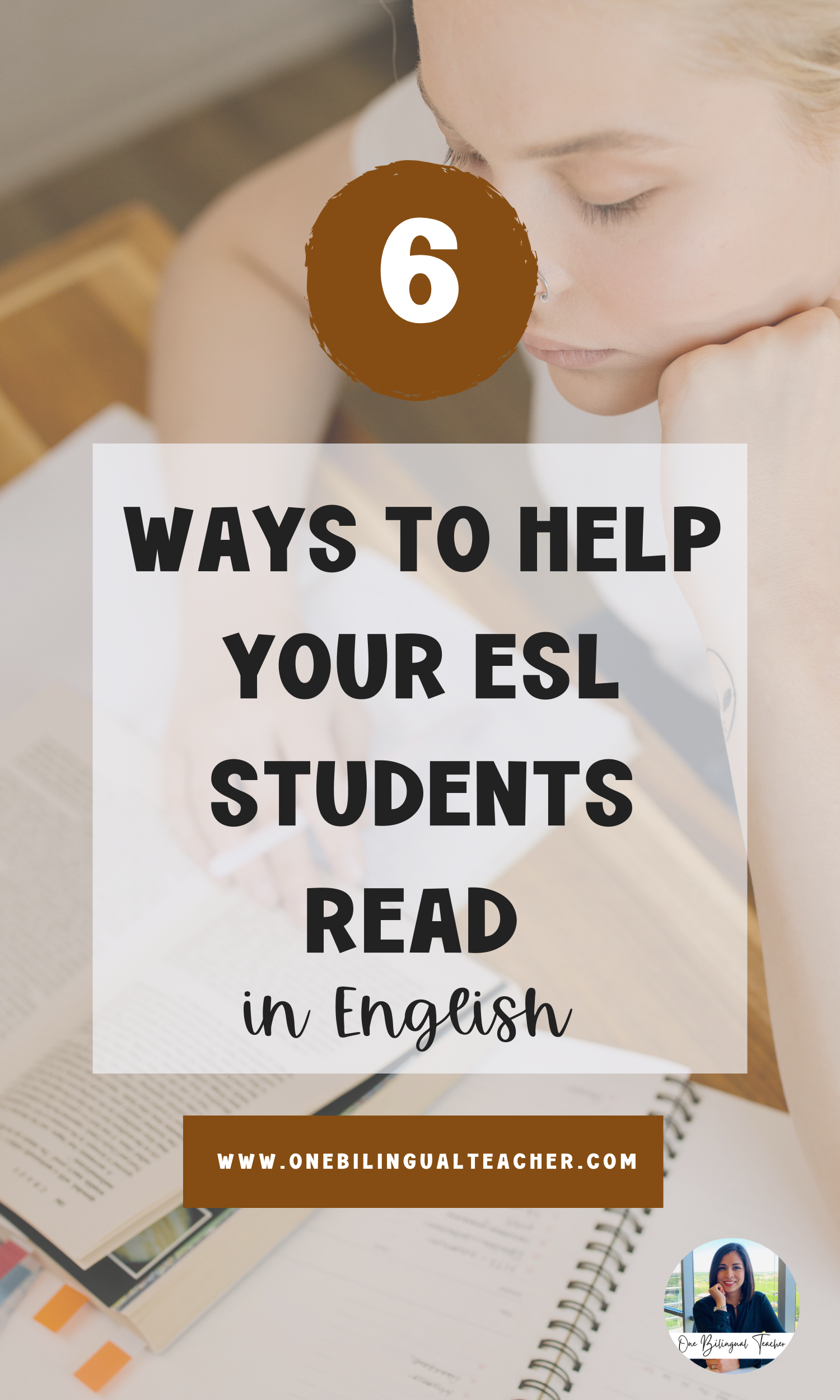6 Ways to Help Your ESL Students Read
Getting our ESL students to read and comprehend grade-level text in English can be a challenge, to say the least. Fortunately, there are some strategies that can help. Students learning English as a second language benefit tremendously from pre-reading strategies, the use of visual aids, and other supplementary materials. In this blog post, you’ll find 6 ways you can help your Emergent Bilingual students succeed in comprehending grade-level material.
The Challenge
Before we jump into the strategies, we must understand the hurdles ESL students face when confronted with on-grade-level texts. These texts contain rich academic language and are often grounded in English-speaking cultures, making them extremely difficult for ESL students. Either way, all students must master these texts to grow academically and in their overall language proficiency.
Pre-Reading Strategies
1. Preview and Discuss
Before the students begin reading, have a discussion about the topic or theme. Encourage them to share their prior knowledge and opinions. Sometimes you’ll need to prompt them multiple times in order for them to get them speaking. You’ll want to bring it to their level, making as many connections to their own life as you can until they get a general gist of the topic of the text. This sets the stage for a more engaged reading experience.
Get students to make predictions about what they expect to run across in the text. This not only sparks their interest but also helps them focus on relevant information while reading. If it’s an informational text, talk about what they think they will learn. If it’s a fiction piece, ask about challenges they think the characters may undergo throughout the story. This is a great time to go through the images and diagrams in the text if available.
2. Introduce Vocabulary
Identify and introduce key vocabulary words that may be unfamiliar to ESL students. Offer clear definitions and context for these words to give students a head start. You can create a slide with words and pictures that illustrate the meaning of the words so they can familiarize themselves with them.
Consider creating a word bank or word wall with these important words. It serves as a handy reference during the reading process and reinforces vocabulary acquisition. Divide a piece of notebook paper into thirds and have students write the word in the first column, and the definition in the second column, and have them sketch a picture of what the word means to them. This has been very effective in my upper elementary and middle school classes.
3. Read the Text Aloud
Reading the text out loud is a very effective strategy for English Language Learners. Many students come to us without a reading background and it’s our job to help them understand what a story is supposed to sound like. Besides, who doesn’t like to listen to a good story?
After you’ve previewed the text, read it out loud to them. This will help with visualization, fluency, and overall comprehension. These reading and listening activities are sure to help with your students’ comprehension.
4. Incorporate Visuals
Visual aids are a powerful tool for improving comprehension. Include images, diagrams, charts, and maps related to the text's content. Visuals provide a tangible context that can make abstract concepts more accessible.
Encourage students to analyze visual elements within the text. Ask questions like, "What does this image convey?" or "How does this diagram relate to the text?"
5. Use Multimedia Resources
Supplement the text with multimedia resources such as videos, audio recordings, or additional articles. These resources offer different perspectives and approaches to the same topic, catering to diverse learning styles. If you’re starting a unit on Hispanic countries, show a video about Hispanic cultures. This gives students prior knowledge to draw from when reading the complex text you’ll be reading in class. It will also spark curiosity and give students a reason to read.
6. Establish a Purpose
Before reading, give students a purpose to read. Discuss what they already know about the topic and ask them to read to find out how or why. Prompts such as “Everybody read to find out how…” or “Read to page 8 to find out why…” This establishes a purpose for reading and improves comprehension.
In a Nutshell
Pre-reading strategies and the integration of visual aids and supplementary materials play a major role in ESL students' comprehension of on-grade-level texts. By incorporating these strategies into your reading class, we can help our ESL learners to approach challenging texts with confidence and enthusiasm. Remember, it's about more than just reading; it's about helping them understand the world and language around us.
Need reading activities for your secondary students? Check these out:



